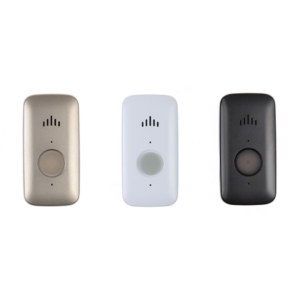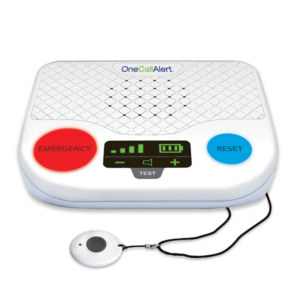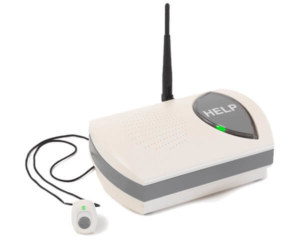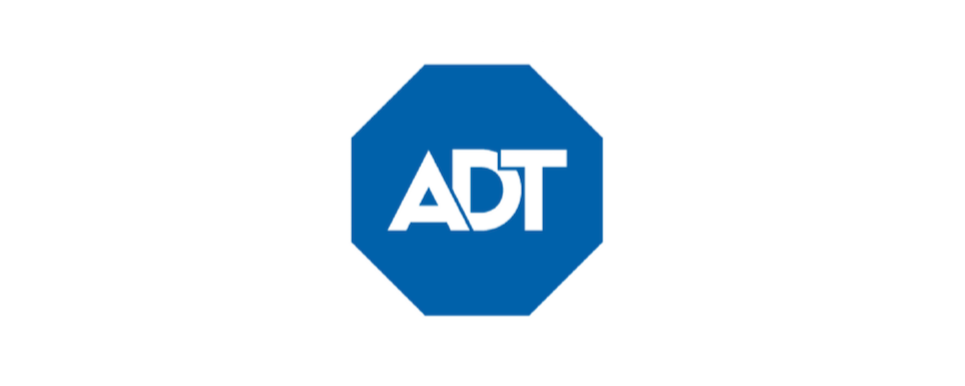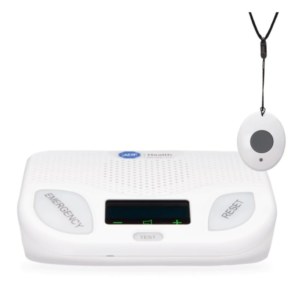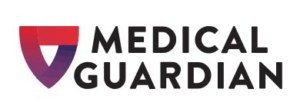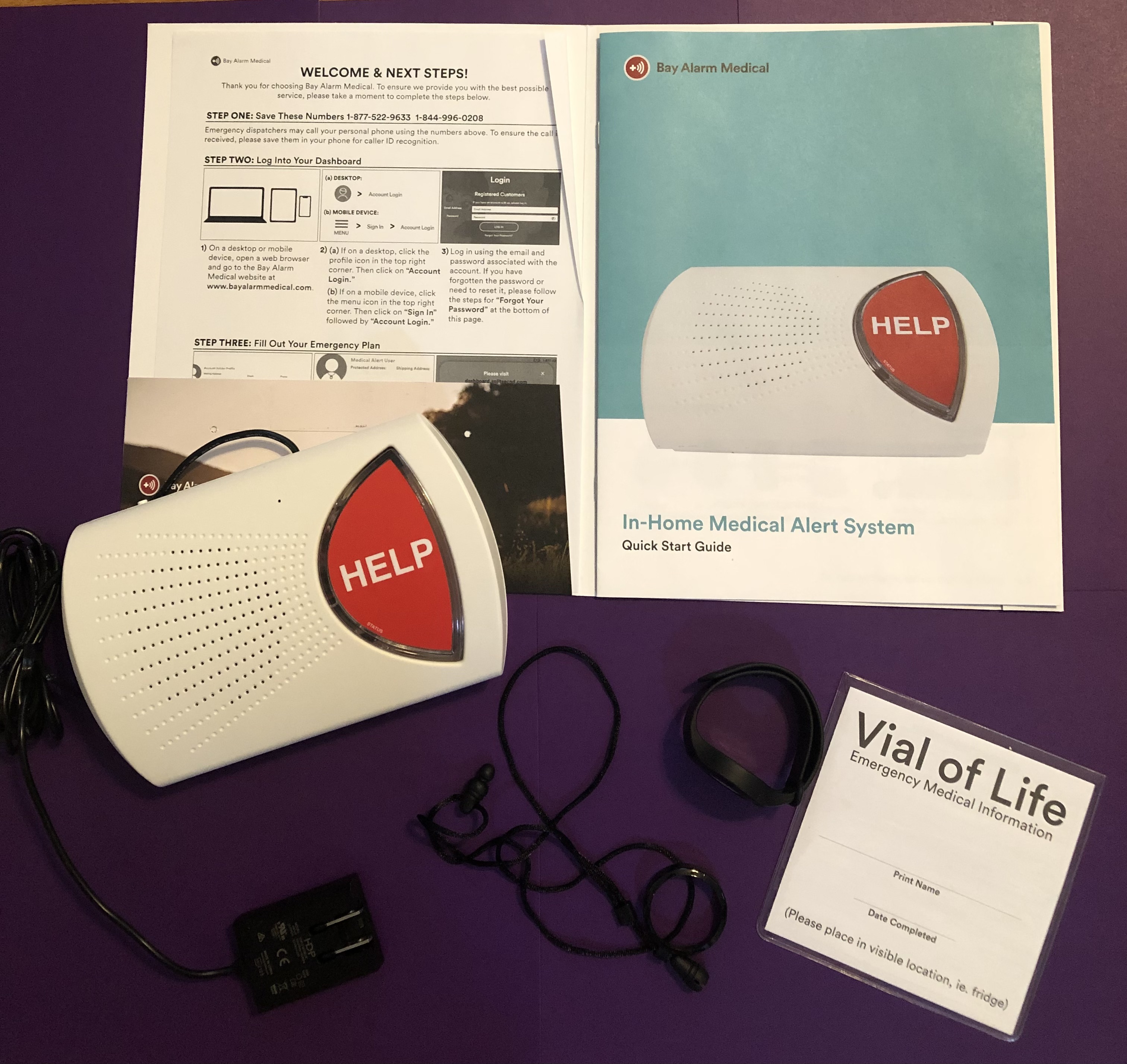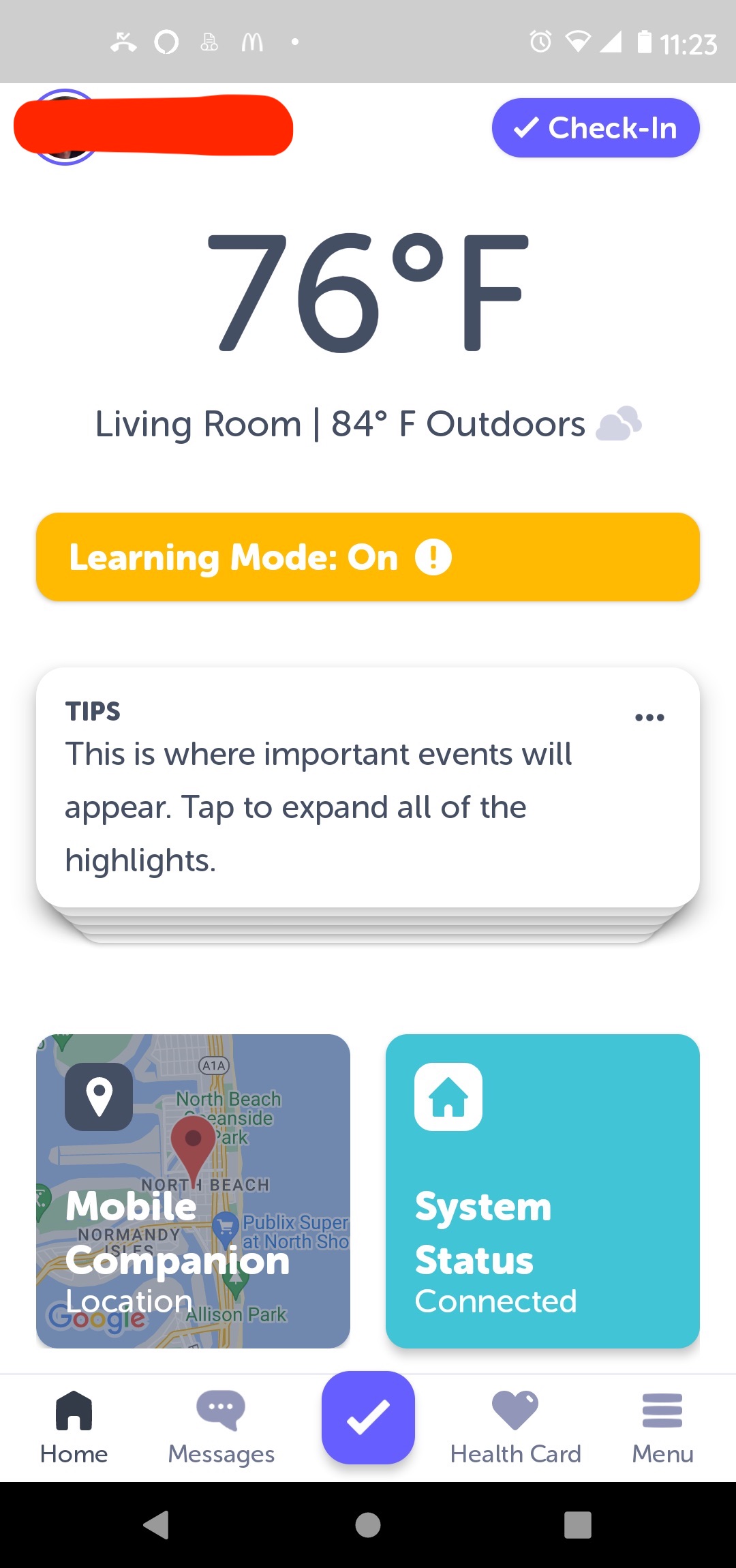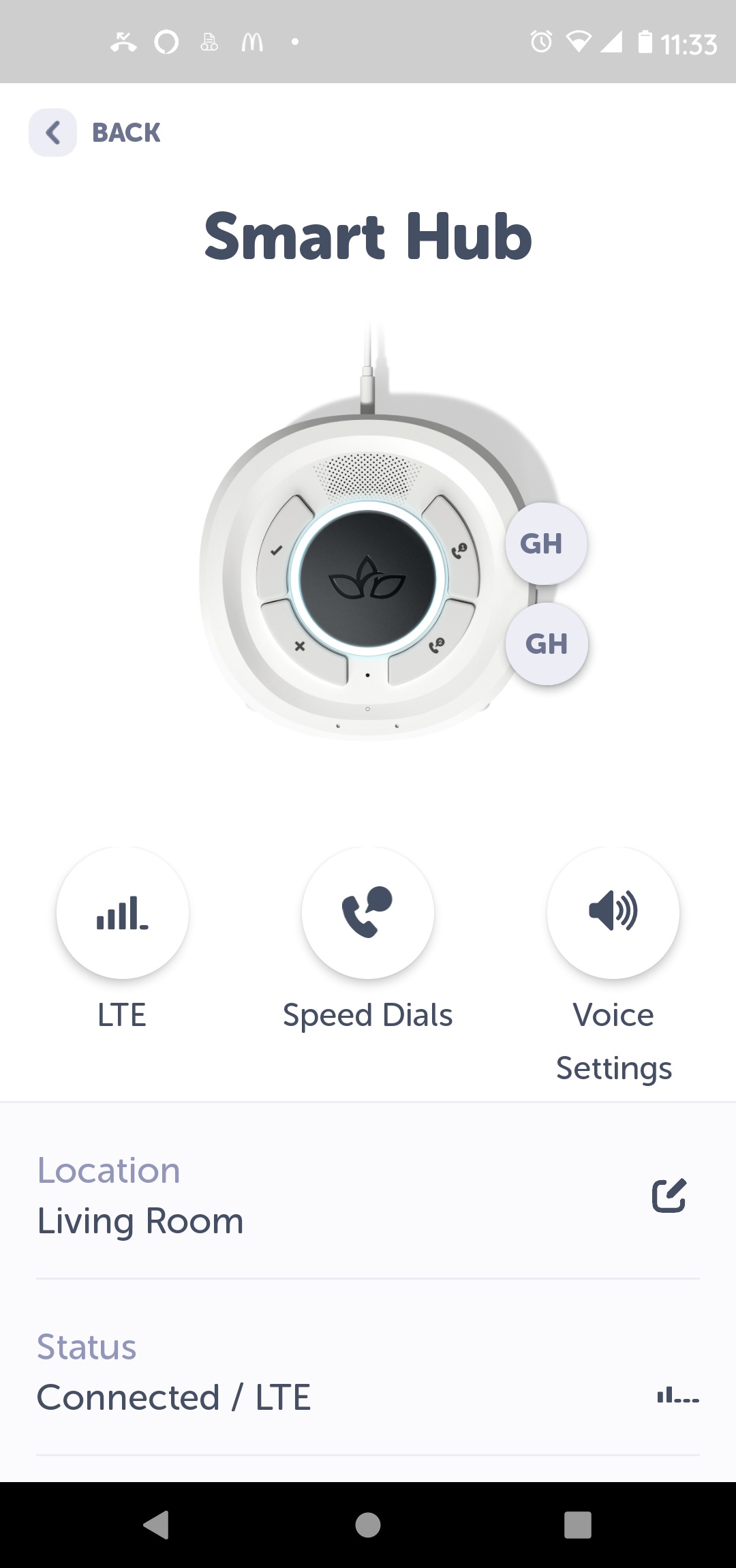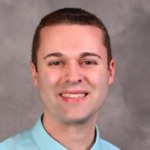Best Personal Emergency Response Systems (PERS) for Older Adults
Best Personal Emergency Response Systems (PE...
Aging in your own home requires finding a balance between independence and safety. Monitoring tools like a personal emergency response system (PERS) can help you achieve this by connecting you to 24/7 emergency services and caregivers.
The team at AgingInPlace.org tested a range of PERS devices, also known as medical alert systems, so we can help you or your loved one find the right system. In this article, we compare specific at-home and mobile models based on firsthand testing and research.
Although we’ve also reviewed the best medical alert systems by brand, this article highlights some of the top models. See our top picks and why an emergency monitoring system can help your plan to age in place.
- Best for an Active Lifestyle: Medical Guardian Mini Guardian
- Best At-Home Range: MobileHelp Classic
- Best Pricing Options: Bay Alarm Medical In-Home Preferred
- No Additional Fees: ADT Medical Alert Plus
- Best App for Remote Caregivers: Aloe Care Health Essentials
Why You Can Trust Our Expert Review
The AgingInPlace.org team extensively researched and tested numerous personal emergency response systems. We selected only the best models to help you choose the right system for you or your loved one.
From more than 1,000 hours of research, we chose five models that we believe are the best personal emergency response systems. We did the following throughout our research process:
- Consulted with geriatricians and adult caregivers
- Mystery shopped the brands
- Surveyed emergency response users twice
- Tested various PERS systems
- Interviewed experts in the medical and aging adult fields
- Read hundreds of verified customer reviews from trusted third parties, such as Better Business Bureau (BBB) and Trustpilot
See our full explanation of our research methodology for a breakdown of criteria in each category and our scoring system.
What is a Personal Emergency Response System?
A personal emergency response system (PERS) is a device that connects to a 24/7 monitoring center. When you connect to the monitoring center by pushing a button, verbally activating the system, or triggering fall detection, the monitoring center agent will respond, assess the situation, and send emergency services to your location.
PERS devices are also known as medical alert systems or personal emergency alert devices.
Top-Rated Personal Emergency Response Systems
Compare our best personal emergency response system below.
| System | ||||||||||||||||||||||||||||||||||||||||||||||||||||||||||||||||||||||
| Mini Guardian by Medical Guardian | AIP Brand Rating | 9.57/10 | Best for | An Active Lifestyle | Cost Per Month | $39.95 | Connection Type | Cellular GPS | Device Range | Cellular connection | Fall Detection | $10 per month |
|---|
| MobileHelp Classic | AIP Brand Rating | 9.05/10 | Best for | At-Home Range | Cost Per Month | $34.95 | Connection Type | Cellular | Device Range | 1,400 feet | Fall Detection | $11 per month |
|---|
| In The Home By Bay Alarm Medical | AIP Brand Rating | 9.62/10 | Best for | Pricing Options | Cost Per Month | $29.95 | Connection Type | Cellular | Device Range | 1,000 feet | Fall Detection | $10 per month |
|---|
| ADT Medical Alert Plus | AIP Brand Rating | 8.71/10 | Best for | No Additional Fees | Cost Per Month | $35.99 | Connection Type | Cellular | Device Range | 600 feet | Fall Detection | $10 per month |
|---|
| Essentials By Aloe Care Health | AIP Brand Rating | 7.64/10 | Best for | App for Remote Caregivers | Cost Per Month | $29.99 | Connection Type | Cellular | Device Range | 200 feet | Fall Detection | N/A |
|---|
Older Adults Have a Higher Risk of Falling
Adults over 60 years old have the largest number of fatal falls, according to the World Health Organization. The National Institute on Aging cites low vision, impaired hearing, and slower reflexes as common causes of falls in older adults. Certain health conditions, such as complications from diabetes and medications used to treat heart disease, can also increase the likelihood of falling.
While personal emergency response systems can’t prevent falls, they can reduce the “lie time” and complications that can arise from prolonged immobility after a fall by connecting you to emergency responders, so you can get medical attention as soon as possible.
Benefits of a Personal Emergency Response System
Personal emergency response systems connect you or your loved one to a 24/7 monitoring center during any emergency. You’ll be able to speak directly with a trained agent who can dispatch emergency services and contact your loved ones. If you’re unable to speak or are unresponsive, the agent will immediately send emergency responders to your location.
“An important conversation is getting a feel for approximate wait times for emergency personnel to arrive. Rural and urban areas are often going to have differences in response/arrival time,” said Christopher Norman, a geriatric nurse practitioner, gerontologist, and advanced practice holistic nurse at PACE CNY. “It’s an important distinction, because signaling help and help actually arriving are two different things—and big considerations when talking about safety and aging in place.”
Other benefits of PERS systems include fall detection, medication reminders, home temperature monitoring, location tracking, activity monitoring, and more.
PERS Are More Affordable Than In-Person Monitoring
Some caregivers may view assisted living facilities or in-home care as the only options for their loved ones, especially if they have mobility or cognitive challenges. While everyone’s situation is unique, PERS monitoring can be an affordable caregiving solution for many older adults.
The Department of Health and Human Services reported the average cost for the following long-term care:
- $253 per day for a private room in a nursing home
- $119 per day for care in an assisted living facility
- $68 per day for adult day health care services
- $20.50 per hour for a home health aide
The average monthly cost of our best PERS monitoring devices is $33.17 per month, which breaks down to only $1.10 per day for 24/7 monitoring and additional caregiver tools.

Older Adults Retain Greater Independence
Staying in your home brings a sense of independence, comfort, and familiarity. An AARP survey found that 76% of older adults in the U.S. want to age in their homes. A PERS device offers safety monitoring that allows older adults to stay in their homes without significantly altering their lifestyle or their caregivers’ routines.
Immediate Response, Anytime
Personal emergency response devices are constantly connected to a monitoring center with agents on-call 24 hours a day, every day of the year. No matter what time of day you have an emergency, you will get help when you contact the monitoring center with your PERS.
Greater Peace of Mind
Personal emergency response systems can give both older adults and caregivers peace of mind and navigate the challenges of aging at home. According to an AgingInPlace.org survey, 90.8% of people feel more confident performing daily activities knowing their PERS device will provide them with immediate assistance.
Simple to Use
Generally, personal emergency response systems are straightforward: You push a button and connect to the monitoring center. If your PERS device has fall detection, the fall detection device, often attached to a lanyard, will contact the monitoring center if it senses a fall.
Most of the models featured here are “plug and play” devices, meaning we were able to use the system after plugging it in and following only three to four steps. Additional features such as medication reminders, home temperature monitoring, and location tracking are often monitored in the online dashboard or app. If you or your loved one is the primary PERS user and isn’t comfortable handling the online account, designate a family member or friend to handle the online dashboard or app. “After every health care appointment, hospitalization, and at least once a month, I advise people to cover changes that may occur in medications or other health routines,” added Norman.
Customer service representatives are also available to help with any issues over the phone or even through online chat.
Help at Home or On the Go
Choose from at-home or mobile PERS devices. A home emergency response system plugs into your wall and connects to the monitoring center via an active landline or cellular connection. While you can still connect to the monitoring center with a wearable help button up to hundreds or over 1,000 feet from your base station, your connection to the monitoring center is limited to your home.
At-home PERS units are excellent if you have limited mobility, stay in your home the majority of the time, or are always with a companion when you’re outside your home.
Mobile systems work anywhere with cellular service. If you’re more independent and enjoy driving, running errands, and other activities on your own, you can take a mobile personal emergency response system with you anywhere and stay connected to the monitoring center.
Mini Guardian is the only mobile PERS listed in our review, but all brands featured here have a mobile system option.
Why Cellphones Aren’t the Best Option for Personal Emergency Responses
Some may argue that personal emergency systems are unnecessary if you have a cell phone. While cell phones are convenient to keep in touch with loved ones or call 911 during an emergency, they have limitations compared to PERS monitoring devices.
Your location may be harder to track when calling 911 compared to PERS GPS tracking. The Federal Communications Commission (FCC) is improving the location accuracy of 911 calls, but the FCC still encourages callers to give operators their exact location. This may not be possible if you’re unaware of your surroundings or are having trouble speaking with the operator during an emergency. Most PERS devices have built-in GPS tracking, so monitoring center agents can see your exact location coordinates during a call.
Cell phone buttons or a touchscreen may be difficult to push and navigate during an emergency. PERS devices have large, central buttons that are designed to be pushed easily. Almost all personal emergency systems have a wearable option, such as a bracelet or necklace, so the help button is within reach at all times. If your cell phone is buried in your purse or pocket, it may be difficult to reach during a medical emergency.
What to Look for in a Personal Emergency Response System
Some devices advertised as personal emergency response systems are not monitored by a 24/7 monitoring center. Instead, the device is programmed to dial 911 or emergency contacts.
The AgingInPlace.org team recommends purchasing a PERS that is connected to a 24/7 monitoring center. All our best personal emergency response system choices and top medical alert systems feature 24/7 monitoring.
The right personal emergency response system is different for everyone and should be based on activity level, caregiving needs, and personal preferences. Keep the following in mind when shopping for a PERS device.
Fall Detection
Fall detection is an optional safety feature available for most at-home and mobile PERS devices. A system with fall detection has built-in motion sensors for detecting falls. If the motion sensors are triggered by a fall or fall-like movement, the system automatically connects to the monitoring center.
Smoke, Fire, and Carbon Dioxide Detection
PERS devices are commonly used for medical emergencies and falls, but some systems also detect extreme indoor temperatures and poor air quality.
Usually, only extreme temperatures, such as from smoke or fire, trigger the system’s sensors. If your indoor temperature goes below or above the system’s “safe” range, the device will either automatically contact the monitoring center or send an app notification to the user and caregivers.
ADT and Aloe Care Health offer PERS units with indoor temperature monitoring, but Aloe Care Health systems also monitor indoor air quality. The Smart Hub measures carbon dioxide (CO2) and volatile organic compounds (VOC) levels and alerts caregivers via the Aloe Care app if indoor CO2 and VOC levels are too high.
Most VOCs are human-made chemicals commonly found in paint, cleaning products, aerosols, and more, according to the Environmental Protection Agency. VOC exposure can be dangerous depending on the level and length of exposure.
Medication Compliance
Medication reminders are becoming a more common PERS feature since they can be set by caregivers in an app instead of pre-programmed in the device. Depending on the PERS unit, you’ll either receive an alert from the system or from the app letting you know it’s time to take your medication.
Fitness and Activity Monitoring
Fitness tracking and activity monitoring are two different features, although they sound similar. Select mobile PERS systems (especially smartwatch personal emergency systems) have built-in step trackers to help wearers monitor daily physical activity goals.
Activity monitoring allows caregivers to make sure their loved one is comfortably moving around throughout the day. Movement is tracked either with motion sensors, like Aloe Care Health’s Smart Hub, or with a standard push-button check-in from the base station. Caregivers will receive an alert if your loved one’s movement patterns change or stop.
GPS Monitoring
For older adults using an on-the-go system, GPS monitoring is a crucial safety feature. Caregivers can check their loved one’s location with a mobile system’s built-in GPS location tracking. We like that Medical Guardian’s app integrates with Google Maps, allowing us to see the location of our Mini Guardian device on Google Maps at all times.
If you or your loved one contacts the monitoring center outside the home, the agent will be able to dispatch emergency services to your exact location coordinates using GPS technology. GPS monitoring is also helpful if your loved one is prone to wandering or if the device is frequently misplaced outside the home.
How Much Does a Personal Emergency Response System Cost?
A personal emergency response system costs $20–$55 per month on average. This cost varies by brand, model, and additional features. Generally, in-home systems are less expensive than mobile systems. You’re usually charged a one-time equipment fee for mobile systems, such as the $149.95 fee for the Mini Guardian. Fall detection is almost always an optional monthly fee.
PERS systems aren’t covered by Traditional Medicare (Part A and B) or Medicaid, but Medicare Advantage (Part C) may cover some costs. Check with your insurance provider for details, since Medicare coverage varies by state.
Some companies offer discounts on monitoring fees, fall detection, or even waive additional fees for a limited promotional period.
How to Choose the Best Emergency Response System for You
The best emergency response system for you depends on your caregiving needs, personal preferences, activity level, and more.
Consider the following when choosing the best PERS alert system for you or your loved one:
- At-home or mobile system
- Connection type and response time
- Cost
- Warranty and trial periods
- Company reputation
- Key features: battery life, water resistance, help button accessibility, style, and comfort
- Optional features: fall detection, voice activation, medication reminders, temperature monitoring, wellness checks, and more
Final Personal Emergency Response Systems Considerations
The right personal emergency response system will vary for everyone. If you’re a caregiver and your loved one is hesitant to use a PERS, empower them by including them in the shopping process—and consider including a qualified health care professional, like a nurse, physical therapist, or occupational therapist, noted Norman.
Many PERS devices have a 30-day money-back guarantee policy. Encourage your loved one to test the device during this period and discuss their concerns, preferences, and other feedback before fully committing to a personal emergency response system subscription.
Frequently Asked Questions
-
An emergency response system is an at-home or mobile device that connects to a 24/7 monitoring center. When contacted, the monitoring center agent will dispatch emergency services to your location.
WRITTEN BY
MEDICALLY REVIEWED BY
Christopher is a Board-Certified Geriatric Nurse Practitioner and Holistic Nurse. As a Nurse’s Aide, Registered Nurse and now Nurse Practitioner, he has loved working with older people since 2004. He earned his Master’s Degree with Honors at Yale University, completed an Advanced Practice Nurse Fellowship in Geriatrics at New York University, and gained comprehensive experience working with people with dementia (and their families) at Upstate Medical University in Syracuse, NY.

